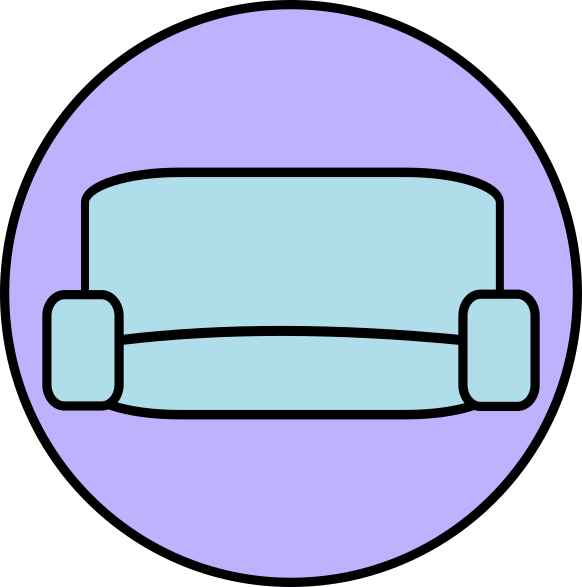I came here to say this! And the creator made winamp too!
- 0 Posts
- 19 Comments
I run freeipa internally, which handles all internal https certs (as well as nice things like handling non sudo auth so I can just ssh to machines from an already authed machine without a PW prompt, and doing ldaps for internal things that support it)
For external web, I have a single box running nginx as a reverse proxy thats web exposed. That nginx box has letsencrypt certs for the public web stuff. The nginx rp has the internal CA on it and will validate the internal https certs (no mullet SSL here!)
I also do different domains for internal vs external, but thats not a requirement for a setup like this
Rhasspy. Idk if rhasspy3 is out fully, but I would wait for that and then set it up. (I have began to see the home assistant side being released - its supposed to tie in a lot better than rhasspy2, and even brought the dev on to the HA project)
Significantly better code gen, but not to the point where it can make an application on its own. I tried using it for an embedded esp32 based project for fun, and while it could create mqtt support, the code for setting up WiFi / a small web backend / some HTML for a front end… It struggled with the application logic. Either way, it got about 70% of the way there

 8·2 years ago
8·2 years agoHighly recommend a soda stream, or soda stream alternative. My go to is 4 or 5 drops of lime juice in a glass, then the carbonated water. Tastes identical to the canned stuff, but way cheaper (and maybe less preservatives? Idk if the canned water has anything besides fruit juice and water)
I also occasionally like root beer if I’m eating something junky like a pizza slice or burger. I bought a bag in a box of syrup from the small root beer brand I enjoy, and can make my own for a few cents instead of a few bucks per bottle. Plus, I can control the concentration depending on how sweet my sweet tooth is feeling that day

 3·2 years ago
3·2 years agoThe best part now though… If something breaks and you need to do some disassembly to fix it, you have the confidence to do it. Same goes for making any mods

 201·2 years ago
201·2 years agoDoesn’t help for this (or the next) oil change… But look into a fujimoto drain plug. Its a mini ball valve that is spring loaded (so you have to press the leaver up before you can turn it… Also has a 2nd safety in the form of a plastic clip that prevents it from being pressed up). Makes oil changes so easy. For your bike, it might still be too recessed, but the valve has a hose barb on it too so you can direct the oil into the drain pan
Thunder in paradise! https://imdb.com/title/tt0395284/

 7·2 years ago
7·2 years agoBatman? I believe it was a mesh protocol

 311·2 years ago
311·2 years agoBut… He linked a Firefox extension… Which is keeping support for v2 api calls as well

 31·2 years ago
31·2 years agoSecret aardvark. Look it up, let the reviews convince you, buy a bottle online, and reply in a week when you try it. You only need a small drop each bite, so the bottle will last. Its also fairly thick so you dont end up with a bunch of wasted sauce

 5·2 years ago
5·2 years agoDamn, came here to say the same thing. I do like heavily stylized movies though… I guess not too many people do, 47% audience score on rotten tomatoes

 8·2 years ago
8·2 years agoI like to create things. For me, its a nice feedback loop of positive feeling throughout the process.
I get to learn new skills in order to complete the thing I’m trying to make. At the end of the day, I get to feel good that I learned something new.
I get to work with my hands and throughout the process, I get to see the progress I have made. At the end of the week, I get to hold the thing as its coming along and feel good about the progress I’m making.
At the end of the month / few months when I’m done with the build, I get to feel accomplished as I have overcome the challenges along the way, and I have a finished “thing”
For the foreseeable time after, each time I use the thing I made, I get a little boost of positivity, because I get to think to myself “yeah! I made this!”
It also allows me to be social by sharing the thing I have made with other makers online, or I can help them with their projects by sharing knowledge I have accumulated.
Polymaker polyterra. I especially love their army blue and black filament. They print nice and matte, and the colors print almost identical between their different colors. I always thought polymaker was a more expensive brand, but polyterra hits that 20usd/kg for pla price point that hatchbox and other budget filaments used to dominate

 326·2 years ago
326·2 years agoWhen you post, the Lemmy app secretly takes a photo of your face. This is then sent to a 3rd party AI application that looks at your facial features and ranks you on how hot you are. This is then sent back to the Lemmy server. This hotness score is then weighted by the users location that is viewing the feed (ie, an LA 7 might be a 9 in Chicago, or a 10 in alamaba if they are genetically related to you)
Maybe a year ago? There were questions on if it still was rootable back then, I just kind of hoped it was, and it worked. I’m not sure about more recently though
Yep, as others have said, valetudo. I have a z10 pro and love it. I highly recommend one with an auto empty dust bin… Having to clean it after every run defeats the purpose of an automated vac. if you forget to empty it, it will be very ineffective the next run.
Also, I would say make sure you can assign a room for it to clean. If you have cats, automating it to clean the litter box room after they go is soooo nice

 2·2 years ago
2·2 years agoSo, less of a food and more of an interesting drink… but pickle backs! I have only met two kinds of people, ones that have never tried them, and ones that love them!
You get a shot of cheap well whisky, and a chaser of pickle brine. Different bars that have em will have different pickels, so there’s a big of variety. IMO, its best with brine that is a little sweet, and medium on the spice.
I’m also a fan of herbal drinks, so sometimes I’ll throw in a bottle of underburg as a chaser to the chaser.




Yep, to add on as well as summarized this… Linux has historically had a design methodology of “everything is a file”. If your not familear with the implications of this, it means your command line tools just kind of work with most things, and everything is easy to find.
For instance, there’s no “registry / regedit” on Linux… There’s just a folder with a config file that the application stores settings in. There’s no control panel application to modify your network settings… Just a text file on your OS. Your system logs and startup tasks were also (you guessed it) sinole filea on the system. Sure there might be GUI apps to make these things easier for users, but under the hood it reads and writes a file.
This idea goes further than you might assume. Your hard drive is a file on the file system (a special file called a block device). You can do something like “mount /dev/sda1 /home/myuser/some_folder” to “attach” the drive to a folder on the system, but that special block device (dev/sda1 in this case) can be read and written to byte by byte if you want with low level tools like dd.
Even an audio card output can show as a file in dev (this is less the case now with pipewire and pulse), but you used to be able to just echo a raw audio file (like a wav file) and redirect the output to your audio device “file” and it would play out your speaker.
Systemd flipped this all around, and now instead of just changing files, you have to use applications to specify changes to your system. Want to stop something from starting? Well, it used to be that you just move it out of the init directory, but now you have to know to “systemctl disable something.service”, or to view logs " journalctl -idk something.service" I dont even remember the flags for specifying a service, so I have to look it up, where it used to just be looking at a file (and maybe use grep to search for something specific)